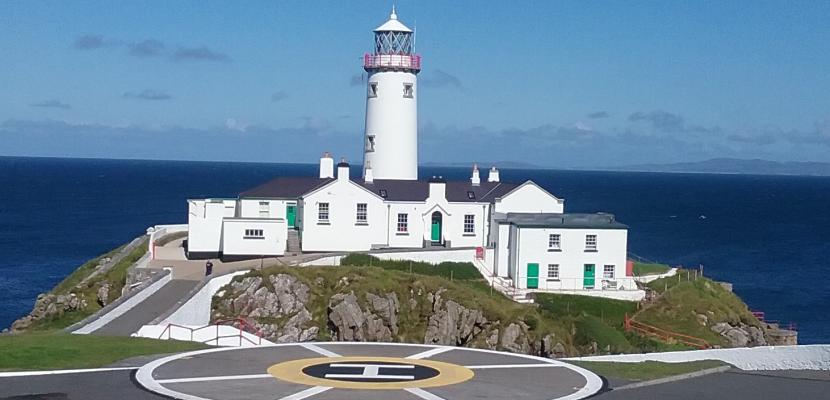Image

Fanad Lighthouse
Published on 24 May 2018

Ireland
This is the good practice's implementation level. It can be national, regional or local.
About this good practice
Fanad Lighthouse is a working industrial structure in a dramatic coastal location that is isolated and difficult to reach. Ancillary buildings were vacant and unused. The Commissioner of Irish Lights launched an initiative in 2015 called ‘Great Lighthouses of Ireland’. The aims of the project were to bring regeneration to remote rural coastal areas through tourism and employment, to give visitors an opportunity to visit or stay in a Lighthouse and find out more about how they work, and as a subsidiary to encourage SMEs (small and medium enterprises) in those areas.
The practice reached its objectives by the establishment of a local company that, in conjunction with Irish Lights and Donegal County Council, informed the opening of the Lighthouse for tours, the renovation of existing buildings to provide tourist accommodation and the creation of employment opportunities for local people both on and off site.
Stakeholders are the local community, tourists and Irish Lights.
The practice reached its objectives by the establishment of a local company that, in conjunction with Irish Lights and Donegal County Council, informed the opening of the Lighthouse for tours, the renovation of existing buildings to provide tourist accommodation and the creation of employment opportunities for local people both on and off site.
Stakeholders are the local community, tourists and Irish Lights.
Resources needed
Set up funding - €800,000 EU Interreg.
Annual funding - €70,000 from different sources
1 Full time Manager
1 Full time Marketing Officer
26 people employed, 16 on a seasonal basis
Annual funding - €70,000 from different sources
1 Full time Manager
1 Full time Marketing Officer
26 people employed, 16 on a seasonal basis
Evidence of success
This is a good practice as it was initiated, is managed and staffed by the local community. It is a project that has realised the economic value of heritage as a tourism driver and has reinvigorated an industrial working structure in a contemporary manner.
Numerical evidence : visitor numbers in 2017 >25,000; 26 people employed;
outsourcing of services, €14,000 annually to local economy.
Numerical evidence : visitor numbers in 2017 >25,000; 26 people employed;
outsourcing of services, €14,000 annually to local economy.
Potential for learning or transfer
The potential for learning from Fanad Lighthouse is interesting for other regions in that the practice can be associated with a number of EYCH 2018 initiatives. These are
No 3 Youth for Heritage – there are 16 young people employed seasonally as guides bringing the story of the Lighthouse to many visitors
No 4 Heritage in Transition – reimagiing an industrial working space for rural regeneration
No 5 Tourism and Heritage – Fanad Lighthouse has become an iconic symbol of Irish tourism globally
No 9 Heritage for All – it is the epitome of citizen participation
The current structure is an example of public/private partnership between Irish Lights and Fanad Lighthouse focussing on tourism business development. co-operative marketing and promotion, setting standards, training guides and story keepers and sharing valuable business insights.
No 3 Youth for Heritage – there are 16 young people employed seasonally as guides bringing the story of the Lighthouse to many visitors
No 4 Heritage in Transition – reimagiing an industrial working space for rural regeneration
No 5 Tourism and Heritage – Fanad Lighthouse has become an iconic symbol of Irish tourism globally
No 9 Heritage for All – it is the epitome of citizen participation
The current structure is an example of public/private partnership between Irish Lights and Fanad Lighthouse focussing on tourism business development. co-operative marketing and promotion, setting standards, training guides and story keepers and sharing valuable business insights.

